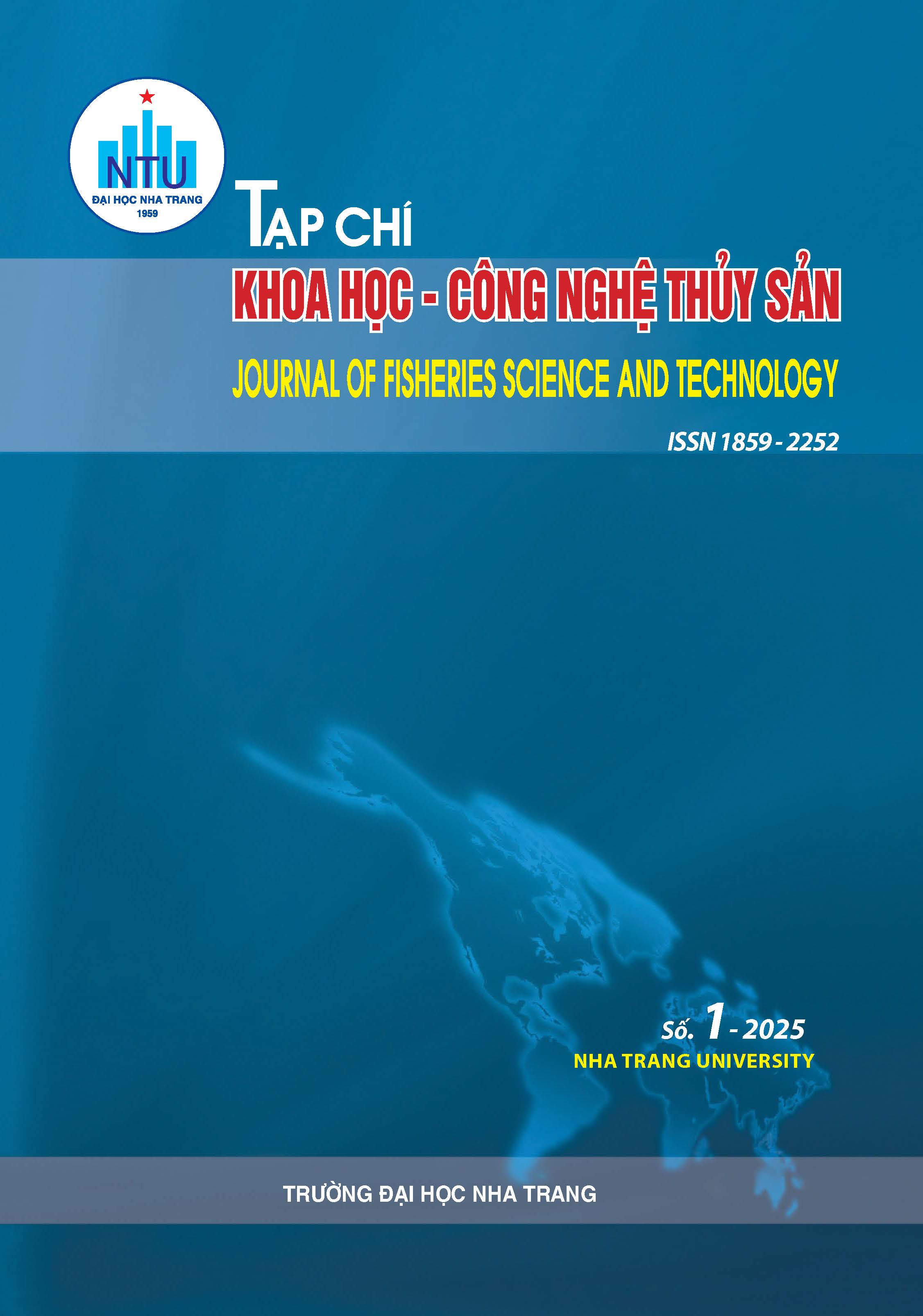##plugins.themes.huaf_theme.article.main##
Tóm tắt
Nghiên cứu được thực hiện nhằm đánh giá hiệu quả của việc bổ sung rong xanh (Chaetomorpha linum) lên men vào thức ăn thương mại trong ương giống tôm thẻ chân trắng (Litopenaeus vannamei. Thí nghiệm gồm 4 nghiệm thức và mỗi nghiệm thức được lặp lại 3 lần. Nghiệm thức đối chứng không bổ sung hỗn hợp rong lên men (0%) và 3 nghiệm thức còn lại bổ sung hỗn hợp rong xanh lên men vào thức ăn với các mức 0,4%, 0,8%, và 1,2%. Tôm giống khối lượng ban đầu là 0,11±0,01g được bố trí mật độ 1.000 con/m3 trong bể 250 L, thể tích nước nuôi là 150 L và độ mặn là 15‰. Sau 30 ngày ương nuôi, tỉ lệ sống của tôm ở các nghiệm thức khác biệt không có ý nghĩa thống kê (p>0,05). Nghiệm thức bổ sung 0,4% rong xanh lên men đã giúp tôm cải thiện đáng kể về tốc độ tăng trưởng và hệ số tiêu tốn thức ăn so với tôm ở nghiệm thức đối chứng và hai nghiệm thức còn lại (p<0,05). Ngoài ra, việc bổ sung bột rong xanh lên men vào thức ăn ở các tỉ lệ từ 0,4-1,2% giúp tôm có khả năng chịu sốc độ mặn mặn thấp (15‰ xuống 0,5‰) và độ mặn cao (từ 15‰ lên 50‰) tốt hơn so với nhóm đối chứng. Kết quả nghiên cứu có thể góp phần phát triển nghề nuôi tôm thích ứng với biến đổi khí hậu.
Từ khóa: rong xanh lên men, sốc độ mặn, tăng trưởng, tôm thẻ chân trắng
ABSTRACT
The study was conducted to evaluate the effectiveness of adding fermented green seaweed (Chaetomorpha linum) to commercial feed in nursery rearing whiteleg shrimp (Litopenaeus vannamei) postlarvae. The experiment consisted of four treatments, each repeated three times. The control treatment did not include the fermented green seaweed (0%), while the other three treatments incorporated the fermented green seaweed into the feed at ratios of 0.4%, 0.8%, and 1.2%. The initial shrimp weight was 0.11±0.01 g, reared at a density of 1,000 shrimp/m³ in 250 L tanks with a water volume of 150 L, and at a salinity of 15‰. After 30 days of rearing, the survival of shrimp in all treatments showed no significant difference (p>0.05). The treatment supplemented with 0.4% fermented green algae significantly improved the shrimp's growth rate and feed conversion ratio compared to the control group and two other treatments (p<0.05). Additionally, dietary supplementation of fermented green algae at ratios ranging from 0.4% to 1.2% helped shrimp better tolerate low abrupt salinity shock (from 15‰ to 0.5‰) and high abrupt salinity (from 15‰ to 50‰) compared to the control group. These results could contribute to the development of shrimp farming practices that adapt to climate change.
Keywords: Fermented seaweed, growth, salinity stress test, whiteleg shrimp

